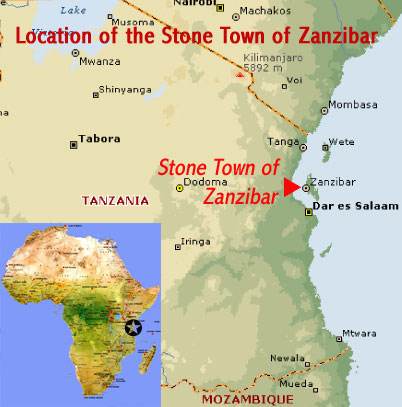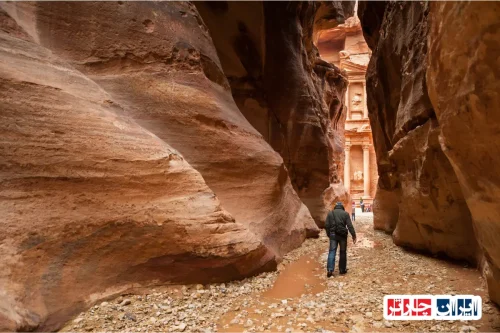Discover the Rich History and Unique Architecture of Knossos Palace Crete Greece
Knossos Palace Crete Greece stands as a testament to ancient Minoan civilization, showcasing remarkable architecture, sophisticated engineering, and captivating legends that have fascinated historians and visitors for centuries. Located on the beautiful island of Crete, this archaeological site offers a glimpse into a civilization that flourished thousands of years ago, leaving behind a legacy of art, culture, and innovation. Exploring Knossos Palace Crete Greece provides an immersive experience into the past, revealing intricate frescoes, complex water management systems, and the legendary labyrinth associated with the myth of the Minotaur. Whether you’re an avid history enthusiast or a curious traveler, visiting this iconic site promises a journey through time, uncovering the secrets of one of Europe’s earliest advanced societies. For more detailed information and guided tours, visit Knossos Palace-Iran Charter. Discover the wonders of Knossos Palace Crete Greece and immerse yourself in the rich cultural tapestry of ancient Greece, right in the heart of the Mediterranean.
Discover the Rich History of Knossos Palace Crete Greece: From Minoan Civilization to Modern Heritage
Knossos Palace in Crete Greece stands as a testament to ancient civilization, dating back over 3,500 years. As the largest Bronze Age archaeological site on Crete, it was the political and ceremonial center of the Minoan civilization. Exploring the history of Knossos Palace reveals its significance as a hub of cultural development, religious practices, and advanced architecture. The site’s origins trace to the Neolithic period, but it reached its zenith during the Minoan era, symbolizing power and sophistication in ancient Greece. Today, visitors can walk through the ruins and witness the remnants of a once-thriving civilization that influenced the entire Mediterranean region.
The Unique Architecture and Engineering of Knossos Palace Crete Greece
Knossos Palace showcases extraordinary architectural ingenuity, featuring multi-story structures, intricate drainage systems, and advanced water management. The palace complex includes grand halls, storerooms, and elaborate frescoes that depict religious rituals and daily life. Its construction utilized lightweight stone and timber, with some parts reconstructed to give visitors a glimpse of its former glory. The labyrinthine layout, with interconnected corridors and multiple levels, reflects sophisticated planning and engineering skills of the Minoans. These features not only served practical purposes but also symbolized the cultural importance of the site as a center of governance and religion in Crete Greece.
Mythology and Legends Surrounding Knossos Palace Crete Greece
Knossos Palace is famously linked to Greek mythology, especially the legend of the Minotaur and the labyrinth. According to myth, King Minos of Crete commissioned the construction of a labyrinth to house the monstrous Minotaur, a creature with the body of a man and the head of a bull. The story of Theseus and Ariadne further connects to the palace, symbolizing heroism and divine intervention. These myths have contributed to the cultural mystique of Knossos, making it a symbol of ancient Greek storytelling. The frescoes and artifacts unearthed at the site often depict mythological themes, reinforcing its legendary status in Greek culture.
Art and Frescoes of Knossos Palace Crete Greece: Visual Stories of Minoan Life
The vibrant frescoes found throughout Knossos Palace depict scenes of religious ceremonies, sporting events, and nature, offering insights into Minoan society. These artworks feature dynamic figures, natural motifs, and symbolic imagery, revealing the spiritual and social values of the time. The frescoes’ bright colors and detailed craftsmanship highlight the artistic sophistication of the Minoans. Notable examples include the Prince of the Lilies and the Bull-Leaping fresco, which symbolize fertility, strength, and religious rites. Studying these visual stories helps us understand the cultural identity and daily life of ancient Crete Greece inhabitants.
The Role of Knossos Palace Crete Greece in Minoan Economy and Culture
As the political and religious heart of Minoan Crete, Knossos Palace played a central role in the region’s economy and cultural development. It served as a hub for trade, craft production, and ceremonial activities, fostering connections across the Mediterranean. The palace’s storerooms contained vast quantities of goods, indicating a complex redistribution system. Cultural practices, including religious festivals and artistic endeavors, flourished within its walls, shaping Minoan identity. The influence of Knossos extended beyond Crete, impacting neighboring civilizations and contributing to the spread of Minoan culture throughout the ancient world.
Recent Archaeological Discoveries at Knossos Palace Crete Greece
Ongoing excavations at Knossos have uncovered new structures, artifacts, and frescoes, enriching our understanding of Minoan civilization. Recent discoveries include sophisticated drainage systems, storage magazines, and detailed wall paintings that depict ceremonial activities. Advanced technology such as 3D imaging and chemical analysis has helped preserve and interpret these findings. These discoveries reveal the complexity of palace life and the technological prowess of the Minoans. They also highlight the importance of conservation efforts to protect this invaluable cultural heritage for future generations.
Influence of Knossos Palace Crete Greece on Later Greek and Mediterranean Cultures
The architectural and artistic innovations of Knossos significantly influenced subsequent Greek civilizations and Mediterranean cultures. Elements such as the use of columns, fresco techniques, and complex urban planning can be traced back to Minoan designs. The mythological and cultural symbols associated with Knossos, like the labyrinth and bull motifs, persisted in Greek art and storytelling. This enduring legacy underscores the importance of Knossos as a foundational site that shaped the development of classical Greek culture and beyond, making it a vital part of world heritage.
Practical Tips for Visiting Knossos Palace Crete Greece: Experience the Ancient Wonder
Planning your visit during spring or autumn offers the most pleasant weather and fewer crowds. Guided tours provide detailed insights into the history, architecture, and myths of Knossos Palace, enriching your experience. Be sure to wear comfortable shoes, as exploring the site involves walking on uneven surfaces. Photography is allowed in designated areas, so capture the stunning frescoes and ruins. Respect the preservation efforts by following site rules, and consider visiting the on-site museum for additional artifacts. A trip to Knossos Palace promises an unforgettable journey into the heart of ancient Greece’s most iconic archaeological site.
Frequently Asked Questions about Knossos Palace Crete Greece
- What is the historical significance of Knossos Palace?
- Knossos Palace is a symbol of ancient Minoan civilization, dating back over 3,500 years. It served as the political, religious, and cultural center of Minoan Crete, influencing the development of early Greek culture and architecture. Its ruins provide valuable insights into the social and ceremonial practices of the time, making it one of the most important archaeological sites in the Mediterranean.
- How old is the Knossos Palace?
- The origins of Knossos Palace date to the Neolithic period, but the most significant constructions were built during the Minoan era, approximately 1700–1450 BCE. Over the centuries, it underwent various reconstructions and expansions, reflecting its importance in ancient Crete.
- What are the unique architectural features of Knossos Palace?
- The palace showcases advanced architectural techniques, including multi-story structures, intricate drainage and water management systems, and elaborate frescoes. Its labyrinthine layout with interconnected corridors and multiple levels demonstrates sophisticated planning and engineering skills of the Minoans.
- What myths are associated with Knossos Palace?
- Knossos is famously linked to Greek mythology, especially the legend of the Minotaur and the labyrinth. According to myth, King Minos built the labyrinth to house the Minotaur, a creature with a human body and a bull’s head. The stories of Theseus and Ariadne are also connected to the palace, symbolizing heroism and divine intervention.
- What do the frescoes found at Knossos depict?
- The vibrant frescoes illustrate scenes of religious rituals, sporting events, and natural motifs. Notable artworks include the Prince of the Lilies and the Bull-Leaping fresco, which reflect themes of fertility, strength, and spiritual practices of the Minoans.
- How did Knossos influence Minoan economy and culture?
- As the hub of political and religious activity, Knossos played a key role in trade, craft production, and ceremonial events. Its storerooms contained vast quantities of goods, indicating a complex redistribution system. The site fostered cultural development and had a lasting impact on neighboring civilizations.
- What recent discoveries have been made at Knossos?
- Ongoing excavations have uncovered new structures, frescoes, and artifacts, including advanced drainage systems and storage rooms. Modern techniques like 3D imaging have enhanced our understanding of the site’s complexity and technological prowess of the Minoans.
- How did Knossos influence later Greek and Mediterranean cultures?
- Architectural elements like columns and fresco techniques, along with mythological symbols such as the labyrinth and bull motifs, influenced subsequent Greek art and storytelling. The legacy of Knossos extends beyond Crete, shaping the development of classical Greek culture and beyond.
- When is the best time to visit Knossos Palace?
- The ideal periods are spring and autumn when the weather is pleasant and visitor numbers are lower. Guided tours are recommended for a comprehensive understanding of the site’s history and myths. Remember to wear comfortable shoes and respect preservation rules during your visit.
- Are there guided tours available at Knossos?
- Yes, many guided tours are available that provide detailed insights into the history, architecture, and legends of Knossos Palace. These tours enhance the visitor experience and help uncover the stories behind the ruins.
- What should I bring when visiting Knossos?
- Comfortable footwear, sun protection, water, and a camera are recommended. It’s also helpful to carry a small guidebook or use a mobile app to better understand the significance of various structures and frescoes.
- Is photography allowed at Knossos?
- Photography is permitted in designated areas. Flash photography and tripods are generally not allowed to preserve the artifacts and frescoes. Always follow site rules and signage.
- What are the main challenges in preserving Knossos Palace?
- Environmental factors, tourism, and natural aging pose threats to the site. Conservation efforts focus on protecting the ruins, restoring damaged structures, and using modern technology to ensure its longevity for future generations.
- Can visitors access all parts of Knossos Palace?
- Most of the main areas are accessible, but some sections may be restricted for preservation reasons. The site is designed to accommodate visitors with pathways and signage, but uneven surfaces require careful walking.
- What is the significance of Knossos in world heritage?
- Knossos is a UNESCO World Heritage Site, recognized for its outstanding cultural and historical value. It represents one of the earliest examples of complex urban planning and artistic achievement in Europe, making it a vital part of global cultural heritage.
























